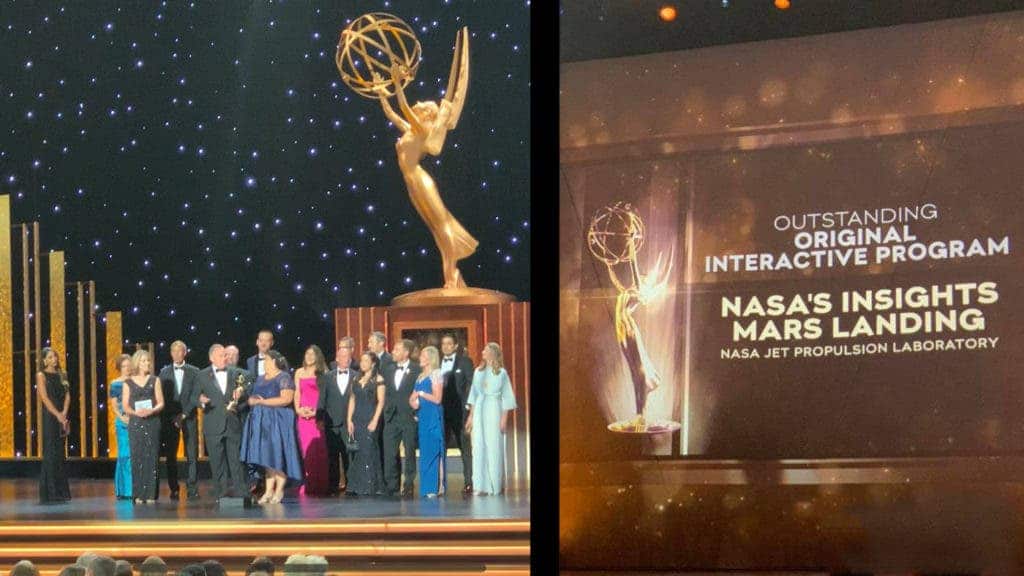
Every year, the Emmy Awards recognize excellence in the television industry. But when you think of TV shows and programs NASA doesn’t typically come to mind. Those guys are into rockets, right? Well, launching stuff into space is always exhilarating, and the story behind such missions is even more thrilling. And because NASA did such a fantastic job at documenting some of its most challenging space projects, it was awarded not one, but two Emmys!
The first Emmy was awarded to a team from NASA’s Kennedy Space Center and SpaceX, on September 14, in the category of Outstanding Interactive Program for multimedia coverage of Demonstration Mission 1.
Both NASA and SpaceX used the latest technology across all media platforms (TV, social media, virtual reality) to document the preparation and the launch itself. Millions of people viewed and shared the exciting rocket launch on social media.
Demonstration Mission 1 successfully launched the SpaceX Crew Dragon capsule — the first spacecraft capable of ferrying humans to launch from US soil since the space shuttle program was retired in 2011 — which docked at the International Space Station in 2018.
NASA’s second Emmy was awarded to a team at the Jet Propulsion Laboratory in Pasadena, California for Outstanding Original Interactive Program for the agency’s commendable coverage of its InSight lander mission to Mars.
InSight isn’t a rover, but a lander that will stay put for the duration of its two-year mission on Elysium Planitia, a gentle Martian plain. The probe is equipped with two important instruments on the Martian surface: a seismometer and a heat probe.
The seismometer will ‘listen’ for marsquakes. By studying these slight seismic waves, scientists want to determine what makes up the planet’s mantle and core. Basically, InSight will study seismic waves as they pass through the Red Planet, using that information as a sort of ultrasound to find out what is lurking underneath the crust. The heat probe will drill down to 16 feet (4.8 meters) to measure temperature, which will be useful in geological studies of Mars.
As with the Crew Dragon capsule, NASA provided unprecedented coverage of its Insight Lander’s journey to Mars.
Unfortunately, InSight has run into trouble. Since March, the lander’s heat probe has gotten stuck in what was supposed to be loose regolith. NASA is now working on a rescue plan that involves using InSight’s Deployment Arm to have it slowly lift the support structure upwards, thereby allowing the teams to get a better look at the device.



